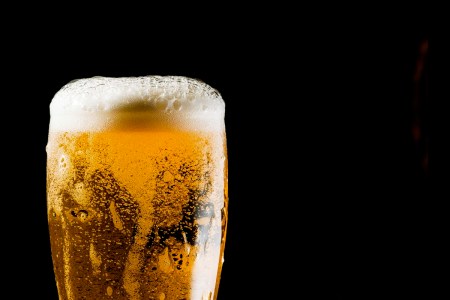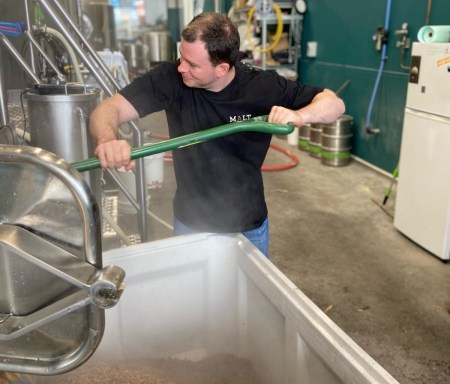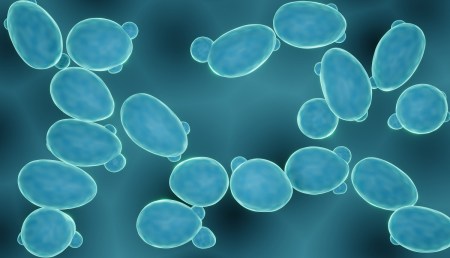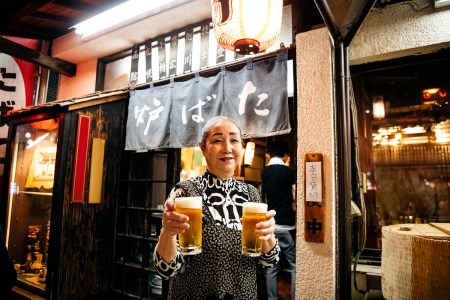
In his continuing series of Deep Dive articles, Brightstar’s brewer Steve Brockman wades into the crisp, refreshing world of lager brewing – from malt and yeast selection to fermentation profiles and lagering times. You can find all of Steve’s previous pro brewing and beer style know-how articles here.
It’s hard to look at the history of lager without acknowledging German brewers. No one brewing culture is tied to the lager as much as Germany and their brewers have perfected many styles of lager over centuries. Despite paler lagers like Munich-style Helles dominating world markets, there exists a colour spectrum of lagers, from the golden dortmunder Exports, amber Märzen, the stronger Bocks and Doppelbocks to the dark Schwarzbiers.
Across the world, Czech brewers nail the Pilseners and the darker Tmave. In the “new world” Mexican brewers deliver crushable Mexican lagers and Vienna-style lagers, while Japanese brewers add rice for their paired back offerings. There is an entire world of lagers – so don’t limit your next brew day to pale, yellow fizzy beers when looking for something to brew.
Simple malt selections, simple recipes
Writing a lager recipe is relatively easy. Most consist of large quantities of one base malt, with a sprinkling of a character malt.
German made Pilsner malt is a common ingredient in some of the best craft lagers and its light biscuity flavour can be used in more delicate lagers. There are variations on the Pils malt – floor-malted Bohemian, Barke, low modified continental style malts. All vary slightly in flavour, but as long as you use something light in colour and protein, it will provide the crispness you are looking for.
As for character malts, look to Vienna and Munich. In fact, in combination with Pilsner, Vienna and Munich make up the holy Trinity of malts for Germanic-style lagers.
It is the varying percentages that define many styles. Vienna adds a gentle honey-like sweetness and a fuller body. Munich malts provide a deeper toasty, caramel, bread-like character to beer like Märzen and Festbier. Munich malts come in various colours – light and dark – so be sure to check what colour lovibond/EBC your malt is and whether it’s appropriate for the style you’re trying to brew.
Other malts to consider include Carapils and Dextrin malts which help to add body to lagers. Carafoam is also a popular malt, helping to create denser foam. A malt like Carafa I or other dehusked roasted malts can add colour without bitterness, and can help to achieve colours from red through to a Schwarzbier’s dark tones.

Step mashes & decoction
While most modern malt is highly modified and only needs a small amount of time in the mash to convert, there is still some merit to running a step mash, especially if you are using under modified continental-style malts.
An easy step regime to emulate is the Hochkurz (“Hoch” high and “Kurz” short) mash regime. Hochkurz regimes are what modern German brewers tend to practice – steps at 63°C, 70°C and 77°C. The lower step (63°C) is the maltose step and favours beta amylase activity, and the formation of maltose.The next step (70°C) is the dextrinisation step, favouring alpha amylase activity and generating dextrin sugars. The final step is arguably the most important as it heats the mash to a high enough temperature to stop any further enzyme activity, ensuring your wort maintains a healthy level of longer chain sugars, which helps to leave enough body in the final product.
Another option that is widely used in traditional lager brewing is decoction. It involves taking a portion of the mash and transferring it to another vessel to be boiled (or near boiled) before being returned to the original mash. In doing so, the mash temperature is raised in steps. Decoction amplifies the malt flavours in the beer, making it toastier, sweeter, chewier and more full-bodied. Many brewers in the old world couldn’t imagine brewing a lager without decocting. Brewers employing this technique now may do a double or triple decoction – it takes time to learn the optimal liquor to grist ratio for the brew kit you’re working with. By mashing thicker than you would normally to begin with, you allow yourself a bit of leeway when it comes to getting each step temperature correct: if you’re too low, you can use some hot liquor to bring the temperature up without blowing out your liquor to grist ratio. A word of warning, however, proper decoction will add two to three hours to your brew day, so make sure it’s something you’d like to try.
Lagers high in Pilsner malt benefit from a longer boil as the malt contains the precursor S-methylmethionine (SMM) which converts to Dimethyl Sulphide or DMS. This canned corn/creamed corn/cooked cabbage character can be avoided by extending the boil from a standard 60 minutes to 90 minutes.
To make sure you get fantastic clarity at the tap, try to make sure you get a good cold break during the wort cooling process. Many of the newer American craft lager producers aim to transfer all their wort from kettle to tank, in 30 minutes at temperatures as low as 6°C. This extra cold knock out shocks proteins out of solution, eliminating it from creating potential haze later.
Lager yeast selections
It is estimated about 70 per cent of the world’s lagers are made with W34/70 – a super clean lager strain isolated from world famous Weihenstephan. It is a workhorse, producing very clean beers with consistent results.
There are other strains that also produce fine lagers. S-23 (isolated from VLB Berlin, also known as Fermolager) has very light fruity notes, from increased ester production. S-189 (isolated from Hürliman in Switzerland) brings a herbal and floral note to your beer. There are also strains such as Diamond Lager (W-308) or Augustiner (L17) strains. Because lagers can be quite delicate, picking the right yeast can be integral in nailing the flavour profile you’re after. Take the time to do research, work out what lager strain is most appropriate for the style of beer you are brewing and experiment!

Fermentation profiles & lagering times
It’s often said that lagers are made, or lost, in fermentation. It’s easy to see why as many lager styles have lighter, more finessed flavours and if your fermentation is stressed or sluggish, it will be very apparent in the final product.
Low and slow is the preferred method here. Keeping to the lower end of the recommended range for the yeast strain you select is wise. Higher temperatures can encourage the yeast to throw sulphur or undesirable esters, such as isoamyl acetate (banana). Lower temperatures will extend your fermentation time, so don’t be stressed if your fermentation is lasting all the way up to 12 to 14 days.
If you have the ability, using a spunding valve can help your fermentation, and suppress ester production, with the added benefit of natural carbonation and retaining foam positive proteins. A spunding valve works by a mechanical spring, which can be adjusted in compression. It is this compression which governs what pressure is required to allow built up fermentation gases to escape. A good spunding valve allows you to precisely dial in a desired back pressure. To use a spunding valve, ferment normally for the first couple of days. After fermentation has passed the high krausen phase, you can slowly increase pressure on your fermentation. You can experiment with pressures and timings but be safe; never set a spunding valve pressure above the safe working pressure limit of your tanks. Always use a spunding valve in tandem with a working (and properly calibrated) tank blow-off safety valve. Avoid spunding too early as heavy krausen in fermentation can block and jam spunding valves, resulting in overpressurisation.
At the end of fermentation, allow the beer to free rise a few degrees to allow a diacetyl rest. Diacetyl is the slick, buttery, butterscotch flavour you can get when you rush fermentation and don’t allow yeast to clean up fermentation. While ale diacetyl rests can be done as high as 18 to 20°C, lager yeasts will happily clean up diacetyl at temperatures as low as 13 to 14°C. A good rule of thumb is to diacetyl rest at 3 to 4°C above fermentation temp. You can achieve this by allowing your tanks to free rise in the final day or two of fermentation.

“The ultimate test with any lager is always after the first sip; if you want to immediately drink more you’ve nailed it.”
Lager is derived from the German word ‘lagern’ which means to store, and it is this storage or “lagering” time that makes all lager styles really sing. It’s best practice to remove the beer off the bulk of the yeast, by transferring to another vessel. You can prep the receival tank to contain finings, so that the beer transferring into the tank thoroughly mixes the fining agents into the beer. While gelatin and isinglass are traditional, both are animal-derived and you can achieve similar clarity with products such as Biofine. Even if you forgo the finings, a solid lagering time is recommended. Store for at least four weeks, ideally six, at temperatures around 2 to 4°C. Don’t forget to periodically yeast off the settling yeast at the bottom.
If you’re looking for a slightly quicker turn around, you can combine lagering with a filter or centrifuge run. Take great care to remove as much oxygen as you can from the process and lower your Dissolved Oxygen levels.
However you choose to do it, make sure your lager is bright and clear for packaging for tap, even if it’s a dark or amber lager. A good beer is one that can be seen through, has a dense, tight foam that lingers on the beer the entire glass. The ultimate test with any lager is always after the first sip; if you want to immediately drink more you’ve nailed it.
Steve’s Deep Dive articles appear in every issue of Beer & Brewer. Subscribe here.

